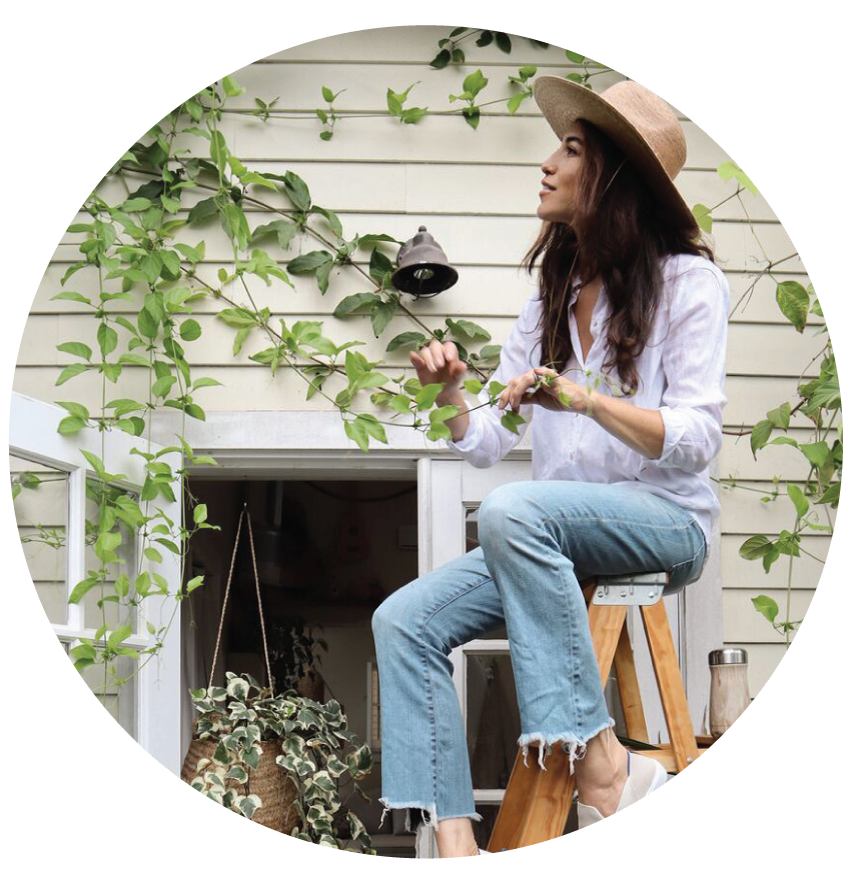Attempting a Low Waste, Long Distance Move
When we decided to leave our little home in Venice and relocate across the country, we knew we’d need to hire movers. Despite having a small indoor-outdoor space that isn’t hard to pack up compared to a traditional home, the realities of uprooting 10 years of live/work life while working full-time during a pandemic in the middle of a high-risk pregnancy with a 4 year old and two pups made it very clear that packing up a truck ourselves and driving it from one coast to the other would just be too much.
Thanks to my line of work, I’ve seen a fair amount of larger moves and installations, despite never requiring one myself. (Until now, for my own relocations in the past, I always just packed up whatever car I had and bopped on to my new setting.) In 2019, it was my experience with a client’s local move within LA that inspired me to halt my one-on-one interior decor and design work. The waste was staggering, and I didn’t want to play such a helpless role within it.
Above: Our “Company Car” the day it arrived from California.
I remember two key moments from that job that sparked the shift in my career. The first was unwrapping a box mislabeled as books that actually contained food, including an open stick of butter swathed in it’s own, massive slice of of brand new bubblewrap and kraft paper. (WHY?!) The second was standing in an expansive living space that was covered wall-to-wall in tape and single-use plastic sheeting to protect the shiny new wooden floor. As the wind slipped through the home, the plastic rippled dramatically, and I imagined that miles of it must end up in landfills within disenfranchised communities, and/or floating in the ocean beyond our tiny cottage, confusing and choking wildlife.
I was adamant about avoiding any similar situations with our own move. So we decided we’d pack everything ourselves, and then hire a moving service for the loading/unloading of the boxes and the transport.
Above: With the exception of one clipping that we brought with us, all of our houseplants went to loving homes in SoCal.
SUCCESSES / FAILURES
When attempting our low waste move, we succeeded in some areas, but failed in others.
GAS
We looked for a moving company that had bio-diesel trucks, and discovered that Northstar in L.A. has a fleet. We were delighted to confirm upon their arrival at the Cottage that the truck was indeed bio-diesel. However, we later learned that these specific trucks aren’t necessarily what are used for the long-haul trip, depending on the logistics of the move. (See below.)
SHARED LONG-HAUL TRANSPORT
Instead of hiring a dedicated individual or team to manage the relocation of our goods via one truck from door to door on set dates, we opted for a company that bundles the contents of numerous moves so that the long-haul ride is shared across clients. (Think of it as UberPool for your stuff.) So even though we were disappointed to find that our belongings didn’t arrive on the bio-diesel truck, we were happy to learn of all the additional stops the truck made and had scheduled. We were initially given a 30-day window for delivery due to this ride-share style of business, but it only took about 2 weeks for the contents of our Cottage to arrive (and we were of course provided with a 48-hour heads-up prior to drop off.)
PROTECTIVE PACKAGING SUPPLIES
To my absolute relief and joy, we were able to avoid buying any new protective packing supplies— no bubble wrap, no peanuts, no packing paper. Instead, we used every blanket, towel item of clothing, pillow or rug we had as protective materials.
The big positives were that this tactic saved us money, resulted in fewer boxes, and meant we had no fillers to trash or recycle. From what we’ve seen thus far, everything we packed this way arrived in tact. We’ve not unpacked it all, as we’re in a temporary space for the time being, but so far we’ve been pleasantly surprised by the effectiveness of our make-shift protective layers.
The negative side of packing this way is that the contents of our moving boxes are wildly varying. For example, our ceramic Walter Filter was stuffed with crochet clothes, wrapped in a baby quilt and, and padded within its container by winter coats. As such, there is basically no categorizing boxes for streamlined organization when they’re prepared in this manner.
BOXES
We failed spectacularly with the boxes themselves, as most of them were purchased new. (I know, I know. I’m not proud of this, folks.) We didn’t have the space to hoard used cardboard in advance, and most of what we did save in the bike/laundry shed suffered mild water damage that was enough to render the cardboard useless.
I had long hoped to drive around to local shops and marketing businesses and nab their used boxes, but between the risks pertaining to the COVID-19 outbreak in Los Angeles, but gave up due to the logistics of driving around the city for hours collecting and breaking down boxes (while pregnant and working and watching a 4 year old).
I researched renting reusable, collapsible crate-style boxes from Rent-a-Crate, but the hauling company required our entire relocation budget, and I was unable to allot the additional sum for crates that would not only need to be hauled, but also stored (and thus rented in an ongoing capacity) for several months.
TAPE
We spent a few extra dollars on two large rolls of brown paper tape instead of plastic packing tape. This tape needs no plastic cutter or dispenser, and was easy to use and effective at securing the boxes. I also find it far easier to remove paper tape when the time comes.










